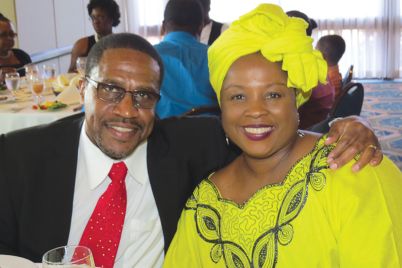A team that is conflict competent resolves its disputes without devaluing anyone or their point of view.
Conflict in teams is inevitable. A team that is conflict competent resolves its conflicts without devaluing anyone or their point of view.
Too often, conflict triggers open hostility, a retreat into silence, and go-along-to-get-along conformity. All reduce the potential productivity of teams.
Here are six fundamental tools leaders need for developing conflict competent teams:
- Allow no interrupting
- Deal with one issue at a time
- Move the focus from the past to the present
- Identify and resolve the systemic issue
- Fix the relationship as well as the problem
- Take a break whenever needed
Allow no interrupting
Allow everyone to finish what they are saying. This is crucial to effective conflict resolution. Interruptions limit the flow of information, as no one can finish what they are saying, and they also irritate, triggering further disruption.
Reduce interruptions by asking interrupters to wait for the other person to finish what they are saying. Stopping interruptions becomes easier if done consistently, and not interrupting becomes the norm.
Allowing no interruptions works to prevent and resolve conflicts in the following ways:
- Everyone is likely to be calmer from having been fully heard.
- People are prepared to listen after finishing what they want to say.
- Not allowing interruptions prevents the emotional escalation they cause.
Deal with one issue at a time
Many conflicts are difficult to resolve because they involve multiple issues. I may be arguing with you about not submitting a proposal on time, while you may be arguing with me about not delivering promised information on time. We can resolve neither issue while focusing on different points.
Stay focused and keep your group focused on resolving a single issue. How many meetings have you been to that became frustrating as the group moved from one point to another without completing the previous problem? The most common complaint about meetings is they take too long to accomplish too little.
Move the focus from the past to the present and future
Meetings often become stalled because of conflicts about what happened or did not happen in the past. Attempting to establish what happened, conflicting interpretations emerge. Each party is adamant about the veracity of their interpretation. These conflicts can quickly escalate into accusations that the other is lying.
We can avoid the escalation of tempers by shifting the focus from what happened in the past to what is happening now and what needs to be done. Conversations about the past can be instructive, but only if they are not used to assign blame.
Our memories of the past are prone to error and differ from person to person. We can resolve conflicts from the past only in terms of what we want to do in the present.
Identify and resolve any systemic issues
I was asked to help resolve a heated disagreement between a safety engineer and his plant manager. The latter wanted the engineer to directly repair any safety issues he encountered. The engineer had refused, claiming that his functional manager had instructed him only to inform, not fix, any problems he discovered.
This was a systemic conflict because there was a lack of clarity within the organization about the role of safety engineers. We resolved the issue at a meeting of higher-level executives with authority to make such decisions.
Fix the relationship as well as the problem
The ability to shift the focus of the conflict from the past to the present relates to the need to ensure that the combatants regain a fully effective relationship. Even after the conflict is resolved, hard feelings can persist, leading to future problems and disputes. Support the parties to negotiate what each would require from the other to reestablish a high equity relationship.
Take a break when needed
Conflicts can sometimes become stuck. Sometimes nothing seems able to stop them from escalating. Those are the times to take a break. Get the group’s attention and tell them to take a 15-minute break.
Ask them to consider, during the break, what they could do to bring the conflict to a win-win conclusion. Send them on their way.
When they return, ask the team for their ideas for resolving the conflict. The cooling-off period provides the time needed to regain composure and reflection. Take a break whenever things seem stuck and likely to get out of hand.
Practice these six tools for conflict competent and highly productive teams!
 Michael F. Broom, Ph.D. is the founder and CEO of the Center for Human Systems. Check him out on his website at www.CHumanS.com. Or email him at michael@chumans.com if you have questions about effectively leading or managing change.
Michael F. Broom, Ph.D. is the founder and CEO of the Center for Human Systems. Check him out on his website at www.CHumanS.com. Or email him at michael@chumans.com if you have questions about effectively leading or managing change.








